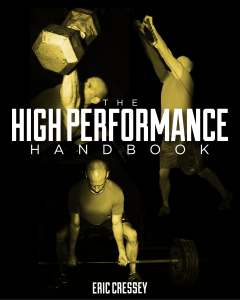What Santa Can Teach You About Sports Medicine
Last weekend, I was watching the Patriots game and this commercial came on during a timeout. I have to admit: it almost made me throw up in my mouth a little bit.
Don’t get me wrong; I’m in the holiday spirit just fine. My point of contention with it was that the commercial represented everything that is wrong with our pathology-based approach to getting people out of pain – or avoiding it in the first place. Rather than cleaning up that terrible hip hinge pattern, building some thoracic mobility, or losing the spare tire that was leading to aberrant core stabilization patterns, Santa opts to pop some Aleve. In other words, he treated the symptoms rather than addressing the movement fault.
Now, I get it: delivering toys to every kid on the planet in a 24-hour span is tough. And, crawling down chimneys is no easy task, either. However, I have to think that if you have the magic to make reindeer fly, you can figure out a way to work some hip mobility drills into your schedule – especially when you have 364 days per year off from work altogether. And, while we’re at it, you probably ought to swap the cookies and milk for some vegetables and a nice warm cup of “get off your duff and teach your body to move correctly.”
It really is the classic example of what we see all the time in both the sedentary population and folks who get injured in strength and conditioning programs, too. They move poorly, then they move a lot – whether it’s squatting 315 for ten reps or trying to cram 500 new X-Box units into an undersized sleigh. Eventually, they either develop symptoms or structural changes (or both). As Gray Cook has wisely said, you never want to put fitness on top of dysfunction.
If you bang your head against the wall all day and take NSAIDs to get rid of your headache, are the NSAIDs really the solution? Or, is removing the harmful stimulus (banging the head against the wall = bad movement) the best course of action? With this analogy in mind, it’s easy to see that improving movement quality is the name of the game.
Unfortunately, what you often see in the weight training world is that people throw out their back squatting or deadlifting with terrible technique and a lack of physical preparation, then come back as soon as they’re asymptomatic to attempt those same movements again. Meanwhile, the underlying movement faults still exist. It’s not much different than Santa going ham every December 25th after nothing more than a rigorous training program of sugar cookie curls.

If you’ve had injuries in your training, don’t just treat them; work backward from them to determine why they occurred. Then, address the “why.”
If you haven’t had injuries, be proactive and think about what movement flaws you have that you can address so that they don’t reach a symptomatic threshold or lead to chronic wear and tear. It’s not just how you feel now; it’s how you feel in 20, 30, or 40 years, too.
Looking for a versatile strength and conditioning program that takes the guesswork out of programming and allows you to select a course of action that’s right for your body? Check out The High Performance Handbook.



